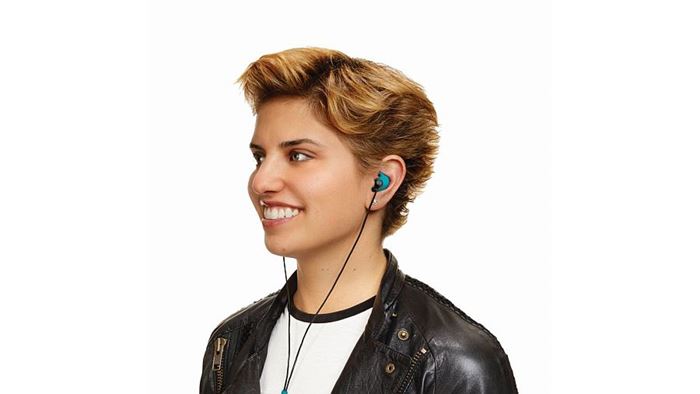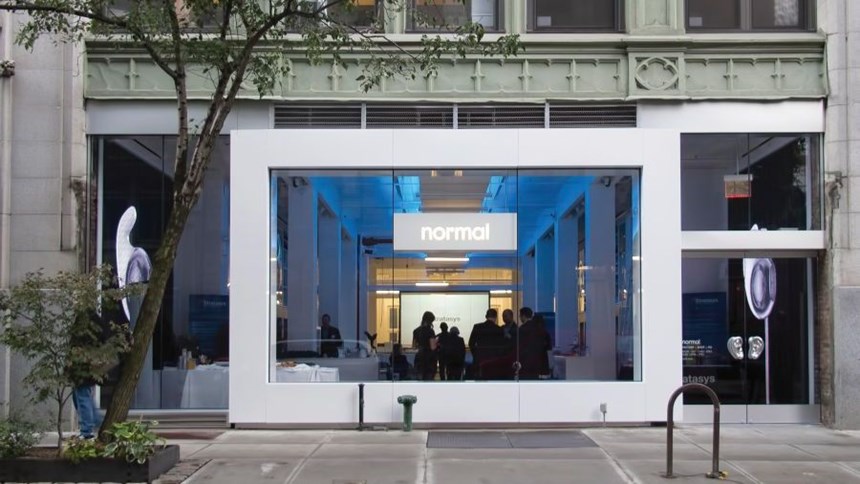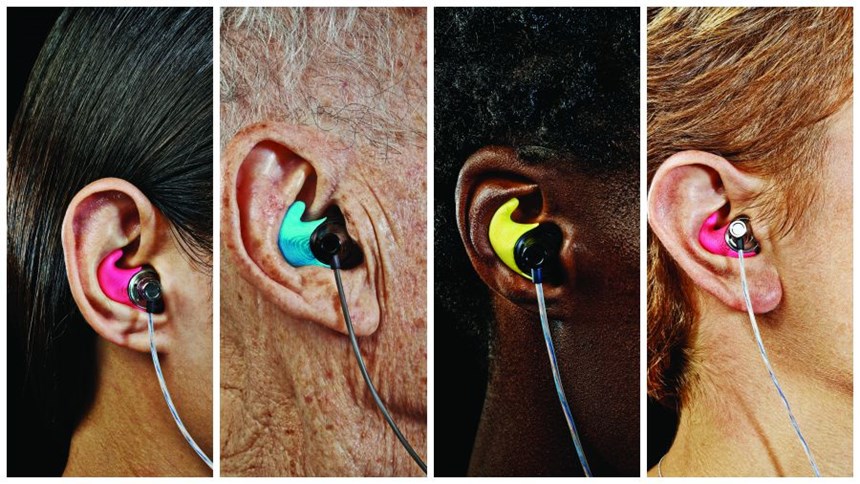Additive Manufacturing Is the New Normal
A company founded on the principle of individualized manufacturing puts AM to work right out front, in its retail lobby.
Leaders of large and small businesses are constantly seeking to attract young talent to careers in industry, asking themselves, “How do we make manufacturing ‘cool’ again?”
Nikki Kaufman has found an answer. Her brand-new company, launched just last July, has a cool, intriguing name: Normal. It’s located in the hip, artsy Chelsea district of Manhattan’s West Side. Her company makes a product desired by almost any user of a smartphone or digital music player. And Normal makes the product better, faster and cheaper than anyone else in the world by using the newest, “greenest” and, some might say, coolest industrial technology—3D printing.
This Bud’s for You
Kaufman started her company out of a quest for earphones that aren’t uncomfortable to wear for extended periods. She tried dozens of available earbuds without success and considered having a pair custom-made. But she learned that would involve a visit to an audiologist’s office to have a mold of her ear made, take three to six weeks, and cost as much as $2,000. She decided she could do better on her own.
“We live in a large-medium-small world today,” she says, “not like in the days when you used to go to a local tailor or cobbler to get clothes or shoes custom-made just for you. Unfortunately, too often we have the Goldilocks experience of things being too large or too small, and rarely just right.”
Kaufman already knew about the speed and versatility of 3D printing from her previous work at the consumer products company Quirky, of which she was a founding team member in 2009 as a 22-year-old Princeton graduate. (It’s located just a few blocks away from Normal.)
Last summer, after eight months developing her new project (including experimenting in her living room) and backed by $5 million in venture capital, Kaufman launched her brainchild based on the idea of making earbuds with a personalized fit in as little as 48 hours and for $199, including shipping and tax. And all the buyer needs is a free iTunes or Android app that walks him through steps of photographing his ears, choosing among several color options and ordering the earphones.
Coming up with a name for her company seemed just as simple: “What is a normal ear shape? There’s no such thing. Everyone’s are different,” Kaufman explains. “Even your left and right ears can differ from each other by up to 20 percent.”
Production on Display
This serial entrepreneur’s venture has joined the handful of today’s companies (apart from service bureaus) whose business model is based on making individually customized products with additive manufacturing—though visitors to Normal’s headquarters might not immediately realize that the company is doing this manufacturing here. The airy, high-ceiling, open lobby is set up as retail space, with colorful pictures on the walls and a counter in back. Standing in this store, you probably wouldn’t immediately notice (as this reporter didn’t) that you’re also in the factory area. Recessed and flush with the walls are eight Fortus 250mc 3D printers from Stratasys. Another floor houses two more of these printers, along with two Stratasys smoothing stations, two paint booths, two cleaning stations and one laser cutter.
The 3D printers are virtually silent, but through their tinted front panels the printer heads can be seen moving back and forth, tracing the customized shapes of pairs of earbuds. These machines use fused deposition modeling (FDM) technology, which extrudes fine molten strands of thermoplastic—ABS, in this case—in thin layers according to a “sliced” CAD model of the part.
FDM is used to produce the custom-shaped earpiece that fits the user’s ear cavity. Seven colors are available. The custom earpiece is soft-touch-coated, and it is assembled with a handful of purchased components, including an injection-molded and UV-coated ABS/PC inner “cabinet,” 14-mm audio speaker, CNC anodized aluminum outer cabinet, brass tube, coaxial connector, and 360-degree rotating CNC anodized aluminum cable housing.
Normal has 25 employees, and about half of them are members of the retail and factory team. One of its first hires was Paula Segal, who heads up operations. She notes that each of the Fortus 250mc printers (which feature a 10 × 10 × 12-inch build envelope) can produce as many as 25 pairs of earbuds simultaneously. Manufacturing time varies with machine loading, however, so that during the day, the machines are more lightly loaded for faster throughput to keep up with the goal of a 48-hour order-to-ship. “But at night it makes sense to the load the machines up more fully,” Segal says.
Normal also has another use for the machines: “We use them to make tools like jigs and fixtures for our own internal manufacturing needs,” Segal explains. That’s in line with what Stratasys CEO David Reis sees as the main near-term market opportunity for FDM—jigs, fixtures and molds, also referred to as “augmented manufacturing.” This is different from “direct digital manufacturing” (DDM) of end products, as Normal otherwise is doing.
With the company still in its infancy, Kaufman doesn’t discuss production capacity or volumes or dollar revenue. “We have lots of capacity, and we’re very happy with the way the business is going,” she says.
Kaufman does note that Normal has filed for patents on its process, product design and what she calls “infrastructure” for translating incoming orders into production.
For the future, she wants more speed. “We want you to order your Normals, go to lunch, and come back a couple of hours later and they’re ready.” She expects it will take a combination of improvements to the manufacturing technology and to Normal’s own processes to make that happen.
Related Content
3D Printed Titanium Replaces Aluminum for Unmanned Aircraft Wing Splice: The Cool Parts Show #72
Rapid Plasma Deposition produces the near-net-shape preform for a newly designed wing splice for remotely piloted aircraft from General Atomics. The Cool Parts Show visits Norsk Titanium, where this part is made.
Read MoreVulcanForms Is Forging a New Model for Large-Scale Production (and It's More Than 3D Printing)
The MIT spinout leverages proprietary high-power laser powder bed fusion alongside machining in the context of digitized, cost-effective and “maniacally focused” production.
Read MoreAt General Atomics, Do Unmanned Aerial Systems Reveal the Future of Aircraft Manufacturing?
The maker of the Predator and SkyGuardian remote aircraft can implement additive manufacturing more rapidly and widely than the makers of other types of planes. The role of 3D printing in current and future UAS components hints at how far AM can go to save cost and time in aircraft production and design.
Read MoreHow Machining Makes AM Successful for Innovative 3D Manufacturing
Connections between metal 3D printing and CNC machining serve the Indiana manufacturer in many ways. One connection is customer conversations that resemble a machining job shop. Here is a look at a small company that has advanced quickly to become a thriving additive manufacturing part producer.
Read MoreRead Next
Bike Manufacturer Uses Additive Manufacturing to Create Lighter, More Complex, Customized Parts
Titanium bike frame manufacturer Hanglun Technology mixes precision casting with 3D printing to create bikes that offer increased speed and reduced turbulence during long-distance rides, offering a smoother, faster and more efficient cycling experience.
Read MoreProfilometry-Based Indentation Plastometry (PIP) as an Alternative to Standard Tensile Testing
UK-based Plastometrex offers a benchtop testing device utilizing PIP to quickly and easily analyze the yield strength, tensile strength and uniform elongation of samples and even printed parts. The solution is particularly useful for additive manufacturing.
Read More3D Printed Polymer EOAT Increases Safety of Cobots
Contract manufacturer Anubis 3D applies polymer 3D printing processes to manufacture cobot tooling that is lightweight, smooth and safer for human interaction.
Read More
























